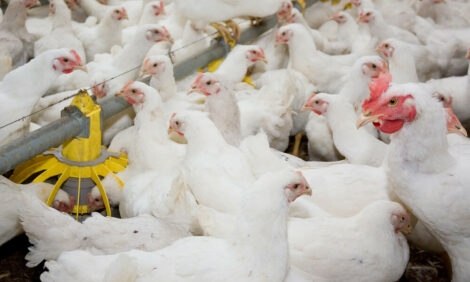



Weekly Outlook: Soybean Market
URBANA - While soybean prices are not high in absolute terms, prices remain higher than expected given the size of the current and expected surplus, said a University of Illinois Extension marketing specialist.
"On the surface, there seems to be some disconnect between known fundamentals and the level of soybean prices," said Darrel Good. "On the other hand, the market may be looking beyond the current surplus, anticipating resurgence in consumption and/or a decline in U.S. production in 2006.
"Talk of the La Nina weather pattern persisting for another three to six months likely raises concerns about widespread drought conditions during a portion of the 2006 U.S. growing season. Potential weather and crop problems get the attention of speculators in a big way, and perhaps that is occurring early this year."
Good said that as the growing season progresses, soybean prices will align with the overall supply and demand situation, whatever it is.
"For evidence that commodity prices do eventually align with fundamentals, one has to look no further than the natural gas market and the 50 percent decline in prices since mid-December," he noted.
Good's comments came as he reviewed the soybean market following the USDA's February report of world supply and demand conditions. That report appeared to provide more bad news for soybeans. Prices, however, remained firm in the face of prospects for a mounting surplus of soybeans.
For the domestic soybean market, the USDA lowered the projection of the 2005-06 marketing year crush of soybeans by 10 million bushels. This change reverses the 10 million bushel increase made in January and reflects the slowdown in the rate of domestic crush in December, as reported by the Census Bureau in late January.
The projections of domestic consumption of both meal and oil were reduced.
"The year-over-year increase in consumption is now projected at 3.2 percent for soybean meal and only 1.6 percent for soybean oil," said Good. "The meal projection still seems large in the face of slow growth in poultry and pork production and increasing supplies of distillers dried grains from ethanol processing."
The projection of U.S. soybean exports for the current marketing year was reduced by 40 million bushels, to a total of 910 million bushels. That reduction is the fourth consecutive monthly reduction, totaling 205 million bushels. The projection is 193 million bushels below the record exports of a year ago.
"The cut in the export projection was a bit larger than expected, but the Census Bureau export report for December, released on Feb. 10, indicated that exports are lagging last year's pace by even more than indicated by the USDA weekly export figures," said Good.
The 2006 South American soybean harvest is now forecast at 3.9 billion bushels, nearly 300 million larger than the record crop of 2005. The forecast is marginally smaller than the January forecast due to a reduction in the forecast size of the crop in Paraguay.
"The largest year-over-year increase in production--200 million bushels--is expected in Brazil due to prospects of higher average yields than in 2004 and 2005, although weather conditions have not been ideal," said Good. "The crop in Argentina may be at risk as well, but is currently forecast to be 55 million bushels larger than the 2005 harvest due to a small increase in acreage."
Good noted that the USDA now expects year-ending stocks of U.S. soybeans to total a record 555 million bushels. The previous record was 536 million bushels at the end of the 1985-86 marketing year.
"The projected level of year-ending stocks represents almost 20 percent of the projected level of consumption during the current marketing year," said Good. "Year-ending stocks have been at or above 20 percent of use only twice before, 1985-86 and 1986-87. During the past 10 years, year-ending stocks have averaged 8 percent of annual use, ranging from 4.4 percent in 2003-04 to 13.4 percent in 1998-99."
On a world basis, the USDA projects year-ending stocks at a record 1.98 billion bushels, or 25 percent of projected consumption, equaling the record percentage of 1985-86. The U.S. and world stocks forecasts are still tentative, depending on the outcome of the size of the South American crop and the actual level of world soybean consumption over the next six months, but it appears that stocks will be huge.
"With soybean consumption slowing and stocks mounting, one might expect prices to move lower in order to encourage more consumption and perhaps discourage soybean planting in 2006," said Good. "Instead, prices have remained generally firm since mid-January. The average daily spot cash bid in central Illinois ranged from $5.40 to $5.73 from Jan. 19 through Feb. 10, and was at $5.56 on Feb. 10.
"During the same period, March soybean futures traded from $5.64 to $6.06, closing at $5.82 on Feb. 10. Basis remains weak. The USDA now projects the 2005-06 marketing year average farm price between $5.20 and $5.80. The mid-point is only 24 cents below the 2004-05 marketing year average when demand was more robust and stocks less burdensome."
For the period September 2005 through January 2006, the weighted average cash price received by U.S. producers was likely near $5.70.
"At the close of trade on Feb.10, the futures market projected an average cash price for the remainder of the year at $5.85, resulting in an average for the entire year of $5.75, equal to the average of a year ago," said Good. "For the 2006-07 marketing year, the futures market is forecasting an even higher average farm price, near $6.10."
Source: ACES News - 14th February 2006









